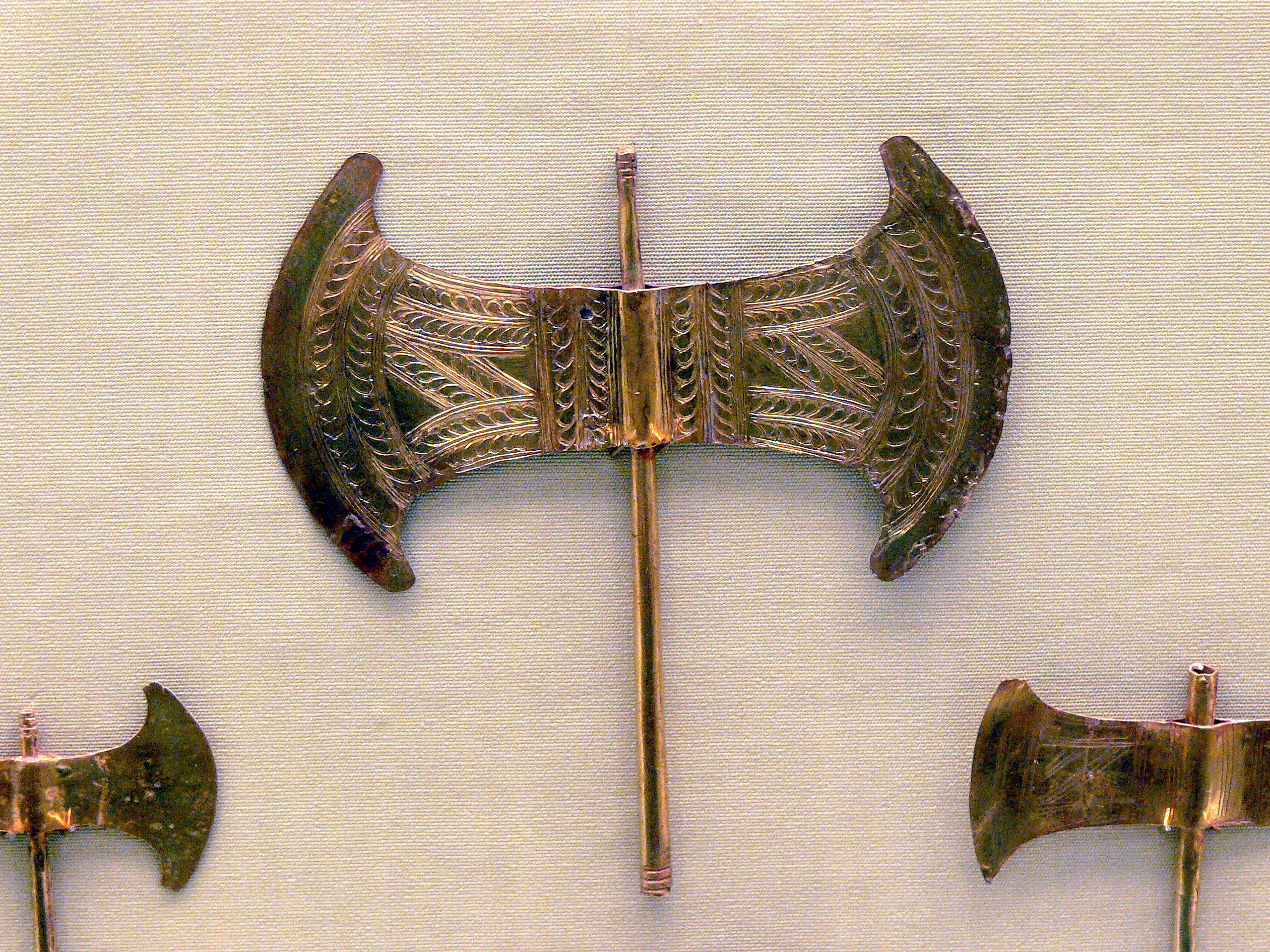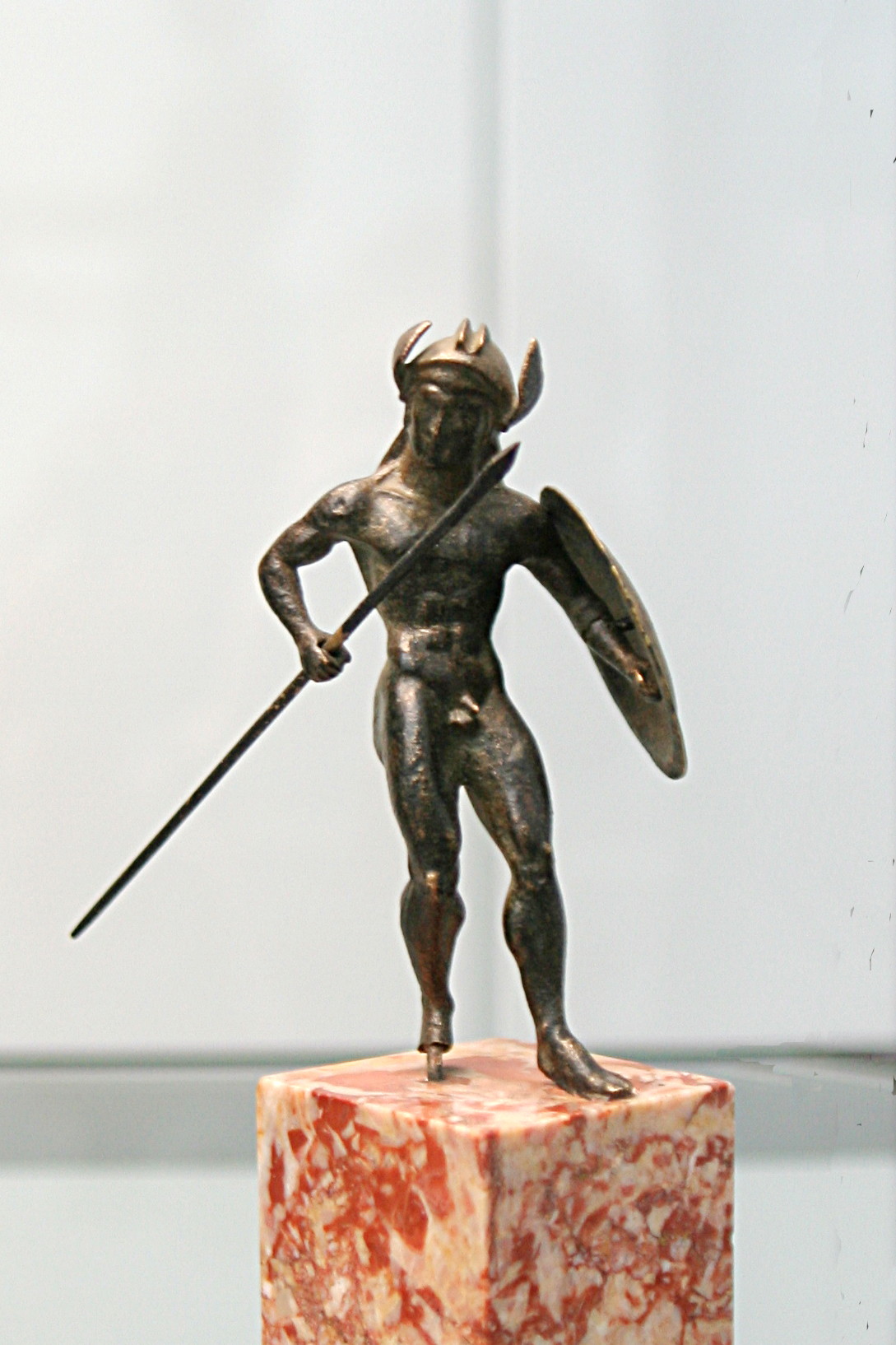|
Sagaris
The sagaris ( grc, Σάγαρις and Σάγαρι) is an ancient shafted weapon used by the horse-riding ancient Saka and Scythian peoples of the great Eurasian steppe. It was used also by Western and Central Asian peoples: the Medes, Persians, Parthians, Indo-Saka, Kushans, Mossynoeci, and others living within the milieu of Iranian peoples. According to Aristarchus of Samothrace, the legendary Amazons used the ''sagaris'', as well. In ''The Histories'', Herodotus attributes the sagaris to the Sacae Scythians in the army-list of Xerxes the Great. The ''sagaris'' was a kind of battle-axe, or sometimes war hammer. Examples have been collected from Eurasian steppe archeological excavations, and are depicted on the Achaemenid cylinders and ancient Greek pottery and other surviving iconographic material. It is a long-shafted weapon with a metal head, with an either sharp (axe-like) or blunt (hammer-like) edge on one side and a sharp (straight or curving) 'ice-pick'-like point on th ... [...More Info...] [...Related Items...] OR: [Wikipedia] [Google] [Baidu] |
Labrys
''Labrys'' ( gr, , lábrus) is, according to Plutarch (''Quaestiones Graecae'' 2.302a), the Lydian word for the double-bitted axe. In Greek it was called (''pélekus''). The Ancient Greek plural of ''labrys'' is ''labryes'' (). Etymology Plutarch relates that the word was a Lydian word for 'axe': . Many scholars including Evans assert that the word ''labyrinth'' is derived from ''labrys'' and thus, would imply 'house of the double axe'. A priestly corporation in Delphi was named ''Labyades''; the original name was probably ''Labryades'', servants of the double axe. In Roman times at Patrai and Messene, a goddess Laphria was worshipped, commonly identified with Artemis. Her name was said to be derived from the region around Delphi. In Crete the "double axe" is not a weapon, however, and it always accompanies women, not a male god. Beekes regards the relation of ''labyrinth'' with ''labrys'' as speculative, and rather proposes a relation with (), 'narrow street', or to th ... [...More Info...] [...Related Items...] OR: [Wikipedia] [Google] [Baidu] |
Scythian
The Scythians or Scyths, and sometimes also referred to as the Classical Scythians and the Pontic Scythians, were an ancient Eastern * : "In modern scholarship the name 'Sakas' is reserved for the ancient tribes of northern and eastern Central Asia and Eastern Turkestan to distinguish them from the related Massagetae of the Aral region and the Scythians of the Pontic steppes. These tribes spoke Iranian languages, and their chief occupation was nomadic pastoralism." * : "Near the end of the 19th century V.F. Miller (1886, 1887) theorized that the Scythians and their kindred, the Sauromatians, were Iranian-speaking peoples. This has been a popular point of view and continues to be accepted in linguistics and historical science .. * : "From the end of the 7th century B.C. to the 4th century B.C. the Central- Eurasian steppes were inhabited by two large groups of kin Iranian-speaking tribes – the Scythians and Sarmatians .. * : "All contemporary historians, archeologists and li ... [...More Info...] [...Related Items...] OR: [Wikipedia] [Google] [Baidu] |
Cylinder Seal
A cylinder seal is a small round cylinder, typically about one inch (2 to 3 cm) in length, engraved with written characters or figurative scenes or both, used in ancient times to roll an impression onto a two-dimensional surface, generally wet clay. According to some sources, cylinder seals were invented around 3500 BC in the Near East, at the contemporary sites of Uruk in southern Mesopotamia and slightly later at Susa in south-western Iran during the Proto-Elamite period, and they follow the development of stamp seals in the Halaf culture or slightly earlier. They are linked to the invention of the latter's cuneiform writing on clay tablets. Other sources, however, date the earliest cylinder seals to a much earlier time, to the Late Neolithic period (7600-6000 BC), hundreds of years before the invention of writing. Cylinder seals are a form of impression seal, a category which includes the stamp seal and finger ring seal. They survive in fairly large numbers and are ... [...More Info...] [...Related Items...] OR: [Wikipedia] [Google] [Baidu] |
Axes
{{disambig ...
Axes, plural of ''axe'' and of ''axis'', may refer to * ''Axes'' (album), a 2005 rock album by the British band Electrelane * a possibly still empty plot (graphics) See also *Axess (other) *Axxess (other) Axxess may refer to: * Axxess Technology Solutions, home healthcare company headquartered in Dallas, Texas. * Axxess & Ace, a music album by Songs: Ohia * Axxess (South Africa), a South African internet service provider * Flight Design Axxess, ... [...More Info...] [...Related Items...] OR: [Wikipedia] [Google] [Baidu] |
Bactria
Bactria (; Bactrian: , ), or Bactriana, was an ancient region in Central Asia in Amu Darya's middle stream, stretching north of the Hindu Kush, west of the Pamirs and south of the Gissar range, covering the northern part of Afghanistan, southwestern Tajikistan and southeastern Uzbekistan. Called "beautiful Bactria, crowned with flags" by the Avesta, the region is one of the sixteen perfect Iranian lands that the supreme deity Ahura Mazda had created. One of the early centres of Zoroastrianism and capital of the legendary Kayanian kings of Iran, Bactria is mentioned in the Behistun Inscription of Darius the Great as one of the satrapies of the Achaemenid Empire; it was a special satrapy and was ruled by a crown prince or an intended heir. Bactria was the centre of Iranian resistance against the Macedonian invaders after the fall of the Achaemenid Empire in the 4th century BC, but eventually fell to Alexander the Great. After the death of Alexander, Bactria was annexed by ... [...More Info...] [...Related Items...] OR: [Wikipedia] [Google] [Baidu] |
Military Historian
Military history is the study of armed conflict in the history of humanity, and its impact on the societies, cultures and economies thereof, as well as the resulting changes to local and international relationships. Professional historians normally focus on military affairs that had a major impact on the societies involved as well as the aftermath of conflicts, while amateur historians and hobbyists often take a larger interest in the details of battles, equipment and uniforms in use. The essential subjects of military history study are the causes of war, the social and cultural foundations, military doctrine on each side, the logistics, leadership, technology, strategy, and tactics used, and how these changed over time. On the other hand, just war theory explores the moral dimensions of warfare, and to better limit the destructive reality caused by war, seeks to establish a doctrine of military ethics. As an applied field, military history has been studied at academies and ser ... [...More Info...] [...Related Items...] OR: [Wikipedia] [Google] [Baidu] |
War Hammer
A war hammer (French: ''martel-de-fer'', "iron hammer") is a weapon that was used by both foot soldiers and cavalry. It is a very old weapon and gave its name, owing to its constant use, to Judah Maccabee, a 2nd-century BC Jewish rebel, and to Charles Martel, one of the rulers of France. In the fifteenth and sixteenth centuries the war hammer became an elaborately decorated and handsome weapon. The war hammer was a popular weapon in the late medieval period. It became somewhat of a necessity in combat when armor became so strong that swords and axes were no longer able to pierce and ricocheted upon impact. The war hammer could inflict significant damage on the enemy through their heavy impact, without the need to pierce the armor. Design A war hammer consists of a handle and a head. The length of the handle may vary, the longest being roughly equivalent to that of a halberd (5 to 6 feet or 1.5 to 1.8 meters), and the shortest about the same as that of a mace (2 to 3 feet or 60 t ... [...More Info...] [...Related Items...] OR: [Wikipedia] [Google] [Baidu] |
Spalirises
Spalirisos, also spelled Spalirises, (Greek: , (epigraphic); Kharosthi: , ) was an Iranian king who ruled Arachosia in the 1st century BCE. Name Spalarisos's name is attested on his coins in the Greek form () and in the Kharosthi form (), which are derived from the Saka name , meaning "in command of army". Career Before his rise to kingship, he served as a commander of Vonones of Sakastan, who had minted coins with his name and that of another commander, Spalahores, who are both referred to as "brother of the king". Scholars such as R.C. Senior and Khodadad Rezakhani consider Spalirisos and Spalahores to indeed be Vonones' brothers, while others such as K.W. Dobbins argue that it was an honorific title given to them, whom he considered to be Saka satraps. A major argument against the proposal of a blood relationship between Vonones and the two commanders was due to both of them having Saka names, contrary to Vonones' Parthian name. Saghi Gazerani has suggested that after th ... [...More Info...] [...Related Items...] OR: [Wikipedia] [Google] [Baidu] |
Johannes Aventinus
Johann Georg Turmair (or Thurmayr) (4 July 1477 – 9 January 1534), known by the pen name Johannes Aventinus (Latin for "John of Abensberg") or Aventin, was a Bavarian Renaissance humanist historian and philologist. He authored the 1523 ''Annals of Bavaria'', a valuable record of the early history of Germany.James Wood, ed.''The Nuttall Encyclopædia'' 1907; a modern biography in English is G. Strauss, ''Historian in an age of crisis: the life and work of Johannes Aventinus, 1477-1534'', 1963. Tutor Having studied at Ingolstadt, Vienna, Cracow and Paris, he returned to Ingolstadt in 1507 and in 1509 was appointed tutor to Louis and Ernest, the two younger brothers of William IV, Duke of Bavaria, all three the sons of Albert the Wise, the late duke of Bavaria. Aventinus retained this position until 1517, wrote a Latin grammar (''Rudimenta grammaticae latinae''; 1512) and other manuals for the use of his pupils, and in 1515 travelled in Italy with Ernest. In his zeal fo ... [...More Info...] [...Related Items...] OR: [Wikipedia] [Google] [Baidu] |
Bluntness
Blunt may refer to: * Blunt (surname), a surname (and list of people with the name) * Blunt (cigar), a term used in the cigar industry to designate blunt-tipped, usually factory-rolled cigars * Blunt (cannabis), a slang term used in cannabis culture * "Blunt" (''Person of Interest''), an episode of the TV series ''Person of Interest'' * Blunt, South Dakota, USA * Blunt Peninsula, Nunavut, Canada * ''Blunt Magazine'', a Canadian blogging e-zine published quarterly * ''Blunt'' (snowboard magazine), a 1990s American periodical See also * Sticky end/blunt end, a possible configuration of a DNA molecule * Blunt force trauma, a type of physical trauma in medical terminology * Blunted affect, a lack of emotional response in psychology * Slides (skateboarding) for bluntslide, a skateboard trick * Blount (other) Blount may refer to: People *Blount (surname), surname of English derivation Place names Canada * Blount, Cochrane District, Ontario England * Kingston Blount ... [...More Info...] [...Related Items...] OR: [Wikipedia] [Google] [Baidu] |
Iconographic
Iconology is a method of interpretation in cultural history and the history of the visual arts used by Aby Warburg, Erwin Panofsky and their followers that uncovers the cultural, social, and historical background of themes and subjects in the visual arts. Though Panofsky differentiated between iconology and iconography, the distinction is not very widely followed, "and they have never been given definitions accepted by all iconographers and iconologists". Few 21st-century authors continue to use the term "iconology" consistently, and instead use iconography to cover both areas of scholarship. To those who use the term, iconology is derived from synthesis rather than scattered analysis and examines symbolic meaning on more than its face value by reconciling it with its historical context and with the artist's body of work – in contrast to the widely descriptive iconography, which, as described by Panofsky, is an approach to studying the content and meaning of works of art th ... [...More Info...] [...Related Items...] OR: [Wikipedia] [Google] [Baidu] |







